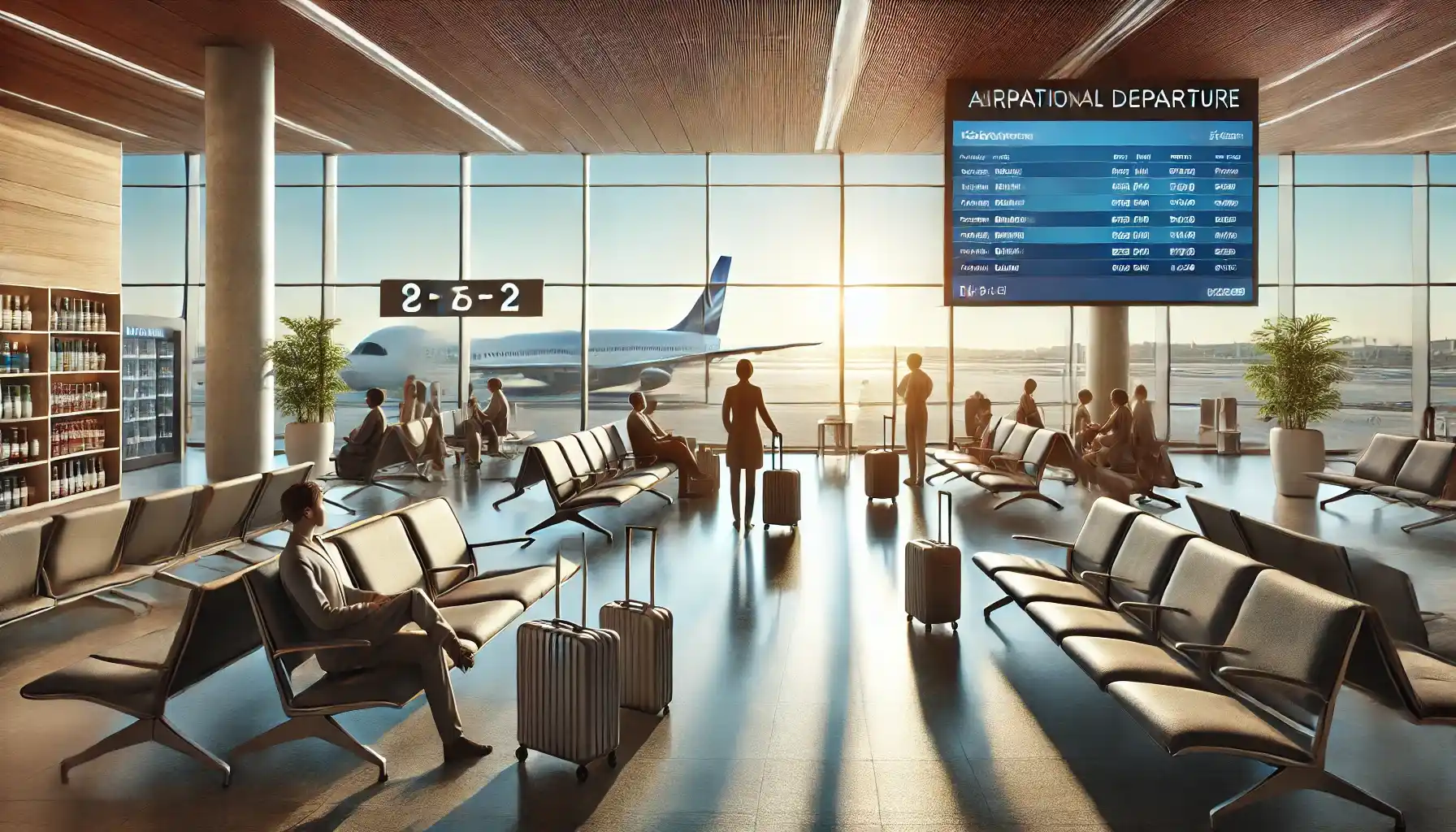Are There Any Hidden Costs When Seeking Medical Care Abroad?
Understanding the Basics of Medical Tourism and Hidden Costs
Medical tourism has grown into a booming industry over the past decade, offering patients a way to access high-quality medical treatments at a fraction of the cost they would pay at home. From dental work in Mexico to advanced surgeries in Thailand, the options are plentiful. However, while the prospect of saving money on medical treatments abroad can be tempting, it is crucial to consider all costs involved, not just the price of the procedure itself.
Often, patients looking into medical tourism only focus on the initial cost savings offered by foreign hospitals, without realizing that additional hidden expenses can quickly add up. These hidden costs can sometimes erase any potential savings, leaving patients with a hefty bill after their treatment.
In this article, we’ll explore some of the most common hidden costs that patients might encounter when seeking medical care abroad and how to plan for them effectively. Understanding these potential costs will help patients avoid financial surprises and make better-informed decisions when planning their medical journey.
1. Travel and Accommodation Costs
One of the first considerations when seeking medical care abroad is travel. While the cost of the treatment itself might be lower than what you would pay in your home country, the expenses for airfare and accommodation can significantly affect your overall budget.
Airfare: A Significant Factor in Overall Expenses
Traveling internationally can be expensive, and airfare is often one of the largest components of a medical tourist’s expenses. Flights can vary significantly depending on the distance between your home country and the destination, the time of year, and the airline you choose. Long-haul flights, especially to countries like India, Turkey, or Southeast Asian nations, can cost hundreds or even thousands of dollars. Moreover, travel expenses may increase if you need to schedule last-minute flights due to unexpected delays or scheduling changes related to your medical treatment.
When planning your medical journey, it’s essential to research and budget for travel costs. Booking flights in advance or using fare comparison websites may help save money, but it's crucial to remember that flight prices fluctuate, especially during peak travel seasons.
Accommodation: Staying Close to the Treatment Facility
Once you arrive at your medical destination, you'll need somewhere to stay. In most cases, patients will need to spend a few days to weeks in the country, depending on the procedure and recovery time required. This can lead to additional accommodation costs, which can add up quickly.
Hotels and guesthouses near medical facilities are often more expensive than those located in tourist areas. It's also common for patients to require additional days of accommodation post-procedure for follow-up appointments or recovery time. In some cases, a longer-than-expected stay may be necessary if complications arise, further increasing costs. Patients should take into account the possibility of extended stays and ensure their accommodations are comfortable and adequately equipped for recovery.
While many medical tourism destinations offer lower accommodation costs compared to Western countries, it’s essential to consider that the most budget-friendly options may not always be ideal for medical recovery. Comfort, convenience, and proximity to the medical facility should be high priorities when selecting where to stay.

2. Additional Medical Expenses
While the main medical treatment may seem affordable, other related medical expenses can quickly drive up the total cost of the procedure.
Complications and Follow-Up Care
One of the most significant hidden costs of medical tourism arises when complications or unexpected issues occur during or after the procedure. Just as with any medical treatment, there is always a risk of adverse effects or complications. In the case of medical tourism, these complications might require further treatment, such as revision surgeries or extended hospital stays.
For example, a patient undergoing cosmetic surgery may need to have additional touch-up procedures if the initial result doesn’t meet expectations, or if there are issues with wound healing or infection. These additional procedures and extended stays may not be covered in the original quote for the treatment and can lead to substantial extra costs.
It's important to factor in the potential for complications when budgeting for medical care abroad. In some cases, complications may even require follow-up care in your home country, further increasing the overall expense.
Postoperative Care
Postoperative care is another area that can incur hidden costs. Patients undergoing surgery often require follow-up visits and treatments to ensure proper recovery. In some cases, these may not be included in the initial cost estimate. Even if follow-up care is provided by the medical facility, patients may find that they need additional treatments such as physiotherapy, pain management, or other specialized services to recover fully.
Additionally, patients may need prescription medications after their treatment, which can vary in price depending on the country and the specific medications required. While some destinations offer affordable medications, others might have a higher cost, especially for branded or specialized drugs.
It’s crucial to confirm with the medical facility whether postoperative care, follow-up visits, and necessary medications are included in the initial cost. If not, make sure to account for these potential expenses in your overall budget.
Health Insurance Coverage
Many patients assume their existing health insurance policies will cover medical procedures abroad, but this is rarely the case. Most standard health insurance plans do not extend coverage to international medical procedures or the potential complications that could arise during or after treatment. This leaves patients without the financial safety net they might have at home.
To fill this gap, patients considering medical tourism should invest in specialized travel insurance designed specifically for medical tourism. This type of insurance typically covers complications, medical emergencies, and the costs associated with additional treatments or follow-up care that might arise during the course of treatment abroad. Without this type of insurance, patients might be required to pay for unexpected medical bills out-of-pocket, which can be financially devastating.
Additionally, some countries have reciprocal health agreements that allow foreign patients to receive subsidized healthcare. However, not all countries have such agreements, and even if they do, coverage may be limited or only applicable in specific circumstances. It’s important to research whether the destination country offers this type of coverage and whether it will apply to the treatments you plan to undergo.
3. Miscellaneous Costs
Beyond the primary costs of medical treatment, travel, and accommodation, there are several other smaller but significant expenses that patients should be aware of when seeking medical care abroad. These can include visa fees, attendant costs, and other unforeseen charges.
Visa Fees
In many cases, patients traveling abroad for medical treatment will need to obtain a visa for medical purposes. While some countries offer medical visas that are relatively easy to obtain, others may require more complex documentation or additional fees. Depending on the destination, obtaining a medical visa can cost anywhere from a few dollars to hundreds of dollars. Furthermore, some countries may have strict visa requirements that take time to process, which can add further delays and costs to the overall medical tourism process.
Before booking flights, patients should confirm whether they need a visa for their medical trip and, if so, budget for the associated fees.
Attendant Costs
For patients who require assistance during their treatment, the cost of bringing an attendant (such as a family member or caregiver) can quickly add to the total expenses. In many cases, patients may need someone to accompany them during their hospital stay or recovery period, especially if they are undergoing complex or invasive procedures. This means additional airfare, accommodation, and living expenses for the attendant, which could easily double the overall cost of the trip.
Some medical facilities offer patient care services or recommend local caregivers for hire, but these services often come at an additional cost. Be sure to inquire about available assistance and factor this into the overall budget when planning for your medical trip.
4. Legal and Liability Risks
When seeking medical care abroad, there are often legal and liability issues that patients may not immediately consider. While many medical facilities in popular medical tourism destinations boast high-quality care and state-of-the-art equipment, not all adhere to the same legal standards or regulations that are required in the patient’s home country.
Liability Risks: Who is Responsible for Mistakes?
One of the most significant hidden costs when traveling for medical treatment is the potential legal and liability risks. Medical malpractice laws differ greatly from country to country. In some destinations, there may be limited or no legal recourse available if something goes wrong with your procedure. Even though international medical facilities strive to maintain high standards of care, mistakes can still happen, and complications may arise after the procedure.
Patients considering medical tourism should carefully research the liability protections offered by the healthcare provider and the legal system in the destination country. If a complication arises that requires additional treatment or revision surgery, there may be limited ability to seek compensation or sue for damages in foreign jurisdictions. This lack of accountability can lead to significant financial burdens if issues arise post-treatment.
In countries where legal frameworks for medical malpractice are weaker, patients may also face challenges getting a refund or reimbursement for additional treatments needed due to a procedure’s failure. It’s essential to weigh these risks and plan for the possibility of unforeseen expenses if complications occur.
Medical Tourism Insurance: A Safety Net for Liability?
To protect themselves from legal and liability risks, many patients opt to purchase specialized medical tourism insurance. This type of insurance typically covers not only medical complications but also provides legal protections in case of medical malpractice. This insurance can be invaluable if something goes wrong during the treatment, as it helps with the cost of corrective procedures and offers peace of mind that the patient’s rights are protected.
However, the cost of medical tourism insurance can add up, and it’s not always included in the initial treatment cost. Patients should inquire about the availability of such insurance policies and ensure that they are covered for all potential risks during their stay abroad.
Lack of Regulation: A Hidden Risk
In addition to legal issues, a lack of consistent regulation is a concern when traveling abroad for medical treatment. While many countries offering medical tourism services have strict regulations governing their healthcare system, others have minimal oversight. This inconsistency can make it harder for patients to evaluate the quality of care they will receive.
Even well-known destinations for medical tourism, like India, Thailand, or Mexico, may have hospitals or clinics that operate without sufficient regulatory oversight or fail to meet international safety standards. Without adequate regulation, there is an increased risk of subpar medical practices, and complications could arise that might not be immediately detectable.
One way to mitigate this risk is by researching hospitals and clinics with international accreditation. Organizations like the Joint Commission International (JCI) ensure that medical facilities meet internationally recognized standards for patient safety and quality of care. Choosing a facility with this kind of accreditation can reduce the risk of encountering substandard care, but it might come at an additional cost.
The Importance of Thorough Research
Before committing to medical treatment abroad, it is crucial to conduct thorough research. Look into the hospital or clinic’s credentials, read patient reviews, check for international certifications, and consult with medical tourism agencies. Legal advice can also be beneficial to ensure you understand the legal framework in the destination country and how it will affect you in case of complications.
5. Currency Exchange and Transaction Fees
In addition to the obvious expenses like airfare, accommodation, and medical treatment, many patients overlook the potential financial burden of currency exchange and transaction fees when paying for medical services abroad.
Currency Exchange Rates: A Variable Cost
When traveling for medical care abroad, the exchange rate between your home currency and the destination country’s currency can fluctuate, and these fluctuations can impact the final cost of your treatment. Even if the initial price for a procedure is lower in a foreign country, a poor exchange rate can increase the cost significantly. It’s important to account for currency fluctuations when budgeting for your medical tourism trip.
For example, if a patient is traveling from the U.S. to a country with a weaker currency, the exchange rate might make their treatment cheaper. However, if the exchange rate shifts unexpectedly, the final cost of their procedure could rise. Using services like currency converters and tracking exchange rates in advance can help mitigate some of this risk. Additionally, exchanging currency through international banks or reputable services tends to offer better rates than local currency exchange kiosks or airports.
Transaction Fees and Hidden Payment Charges
Patients may also face hidden transaction fees when making payments for medical services abroad. Many international medical facilities may charge additional fees for processing payments made with international credit cards, or through wire transfers. These fees can range from a small percentage of the total treatment cost to a flat fee for international transactions.
Moreover, patients who plan on paying for their medical treatments using credit cards may encounter foreign transaction fees. These fees are often added by the credit card issuer and can range between 1% and 3% of the total amount spent. When making large payments for medical services, these transaction fees can add up and significantly increase the overall cost.
To avoid unexpected transaction costs, patients should inquire about the payment methods accepted by the medical facility and determine whether there are any hidden fees. Additionally, consider paying in cash (if safe and feasible) to avoid credit card fees, or use a currency exchange service with minimal charges.
6. The Role of Local Travel and Transportation
While patients often budget for airfare and accommodation, local travel and transportation costs within the medical tourism destination can also add up. Most patients will need to arrange transport to and from the hospital or clinic for pre-treatment consultations, medical procedures, and follow-up visits. Whether it’s a taxi, public transportation, or a private driver, these costs can accumulate quickly, especially if the medical facility is located in a distant part of the city or country.
In many cases, medical facilities may offer transportation services for an additional fee, or the medical tourism agency may assist with coordinating travel arrangements. However, these services are typically not included in the treatment cost. Patients should research the local transportation options in advance and estimate the cost of traveling within the country during their stay.
Additionally, if the destination country requires longer stays in multiple cities (such as for consultation and follow-up visits), transportation costs could be higher than initially expected. To minimize costs, patients can inquire whether their accommodations or medical facility offer discounted or bundled transportation services.

7. How to Minimize Hidden Costs When Seeking Medical Care Abroad
While medical tourism can provide substantial savings, the key to a successful and cost-effective treatment abroad lies in understanding and managing the potential hidden costs. By taking proactive steps and thoroughly planning each aspect of the journey, patients can minimize unexpected expenses and ensure that their medical tourism experience remains within budget. Here are several strategies that can help you navigate these hidden costs and make informed decisions:
A. Research and Select Accredited Medical Facilities
One of the best ways to minimize hidden costs is by choosing a reputable, accredited medical facility. Hospitals and clinics that have international certifications, such as the Joint Commission International (JCI) or ISO certifications, maintain higher standards of care and safety. These accreditations can reduce the risk of complications and the need for additional treatments, saving both time and money in the long run.
Look for clinics with a proven track record in treating international patients. Often, these facilities are more transparent about costs and are accustomed to handling the complexities of medical tourism. Additionally, they may offer fixed-price packages that include accommodation, transport, and other services to help patients avoid hidden charges.
B. Get a Detailed Treatment Estimate
Before committing to any procedure, always request a comprehensive, itemized quote from the medical facility. This quote should include all possible costs, from the initial consultation to the final follow-up visit, as well as any additional treatments or complications that may arise. Be sure to clarify whether post-operative care and follow-up visits are included, or if those will be billed separately.
Inquire about potential additional costs that might arise due to complications, emergency care, or revision procedures. A clear understanding of what is included—and what is not—will help you avoid unpleasant surprises when it comes time to settle the bill.
C. Understand Your Insurance Coverage
One of the most critical steps in avoiding hidden costs is understanding your insurance coverage and ensuring it will protect you throughout the medical tourism process. Regular travel insurance policies often exclude coverage for medical procedures done abroad, especially in the context of elective surgeries or non-emergency treatments.
Look into purchasing a medical tourism-specific insurance policy that covers potential complications, post-operative care, and emergency situations. Some policies may also provide liability coverage in case of malpractice or medical errors. Understanding what is covered by your insurance and what isn’t will help you make a more informed decision.
Additionally, check if your home country has reciprocal health agreements with the destination country, as some countries offer subsidized healthcare for foreign patients under certain conditions. However, this is rare and typically applies to only a few medical treatments.
D. Plan for Unexpected Complications and Post-Op Care
Complications and the need for additional post-op care are two common hidden costs that medical tourists may not initially factor into their budgets. Although many procedures are straightforward, it’s always important to prepare for the possibility of complications, especially if you're undergoing major surgery or treatment.
Inquire about the likelihood of complications and how the clinic handles unexpected situations. Find out if any additional treatments, surgeries, or hospital stays are covered, and if not, ask for estimates of these potential costs. Having this knowledge will help you assess the overall financial risk of your treatment abroad.
You should also ensure that you have access to follow-up care, either through the original clinic or a local provider once you return home. Some procedures may require multiple visits, and patients may need to take several months off work for recovery, so accounting for this time and possible travel costs for follow-up visits is essential.
E. Budget for Local Transportation and Accommodation
Traveling to and from a medical facility in a foreign country can incur substantial local transportation costs. Depending on your treatment and recovery schedule, you may need to take multiple trips to the hospital or clinic for consultations, pre-treatment screenings, and follow-up care.
To minimize transportation costs, research public transportation options, ride-sharing services, or private transport deals offered by the medical facility. Many hospitals offering medical tourism services also provide shuttle services for international patients, and some might offer bundled packages that include both transportation and accommodation for an added fee.
Accommodation is another hidden expense to consider. Depending on the length of your treatment and recovery time, you may need to stay in a hotel or guest house for several weeks. Some medical facilities offer discounted rates at partner hotels, which can help reduce accommodation costs. If you need to stay for an extended period, consider renting an apartment or a vacation home, as this could be more affordable than staying in a hotel for long periods.
F. Currency and Payment Options
As mentioned earlier, currency fluctuations and payment fees can quickly add up when paying for medical care abroad. To minimize these costs, keep an eye on exchange rates in the months leading up to your treatment. Use online tools to track currency trends and consider exchanging money at a favorable time to maximize your purchasing power.
If possible, try to make payments in the local currency to avoid additional fees from credit card companies or banks. Some medical facilities offer discounts or payment plans for international patients who pay in cash. Make sure to check for transaction fees, especially if using international payment methods such as wire transfers or credit cards with foreign transaction fees.
G. Bring a Travel Companion or Attendant
For patients who need assistance during the medical journey, bringing a travel companion can be a helpful support system. However, it’s important to account for the additional costs this entails. Not only will you need to cover the companion’s travel expenses, but you’ll also need to provide accommodation and possibly extra medical services for them.
If a companion is essential for your recovery process, consider coordinating with the medical facility to determine if they offer any packages or discounts for accompanying individuals. Additionally, you may want to look into affordable accommodations that can accommodate both the patient and their companion to help keep costs down.
Conclusion: Planning for a Successful Medical Tourism Experience
While seeking medical care abroad can save significant money compared to domestic healthcare, it’s vital to consider all hidden costs to avoid financial surprises. Travel, accommodation, insurance gaps, legal risks, post-treatment care, and unexpected complications are just a few of the factors that can quickly inflate the cost of treatment.
To ensure a successful and cost-effective medical tourism experience, patients should do thorough research, obtain detailed treatment estimates, and make sure their insurance fully covers the treatment abroad. Choosing accredited medical facilities with international standards, understanding the legal landscape, and planning for additional expenses like transportation and accommodation are essential for minimizing hidden costs.
By staying informed, proactive, and prepared, you can enjoy the benefits of affordable medical care while avoiding unexpected financial pitfalls. Medical tourism can be a rewarding option for those seeking quality care at a lower price, but only if all potential costs are accounted for from the outset.





